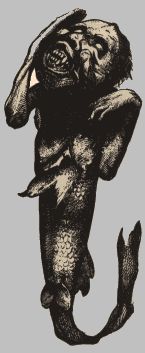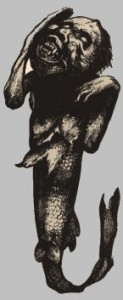Monsters and fantastical creatures are integral components of every culture and society. It’s easy to dismiss fantastical beasts such as Cyclopes, unicorns and mermaids as fanciful creations of story tellers with over-active imaginations. While this may be true, there are also often plausible explanations of either extinct or extant animals which could spark such tales. The intriguing pseudoscience of cryptozoology has a long history which is still strong today.
Marauding Cyclopes seem to have been rampant on the islands of mythological Ancient Greece. One of the explanations suggested for the origins of these one-eyed monsters stems from dwarf elephant fossils found on Cyprus. The central nasal cavity for the trunk may have been interpreted as a large single eye socket which could have sparked the legends. Plausible enough but, if true, the elephant origins doesn’t explain why Cyclopes are never depicted with tusks.
Convinced of their existence, Greek writers included unicorn descriptions in natural history rather than mythology writings. Medieval and Renaissance curiosity collections often included fragments of unicorn horns belonging to the real unicorns of the sea, narwhals. Leaving any magical capabilities aside, the existence of a single-horned artiodactyl isn’t that implausible. Pre-historic contact with a giant Eurasian rhinoceros, the Elasmotherium may be one origin of unicorn stories. More recently, the birth of a roe deer with an unusual genetic mutation resulting in a single central horn sparked many “modern day unicorn” stories.
When early explorers ventured beyond the dire “here be monsters” warning on their limited maps, monster sightings were often confirmed rather than dismissed. Christopher Columbus recorded mermaid encounters en route to discovering the New World in 1492. Sea manatees and their penchant for sometimes sitting upright in the water seem to be the most likely explanation for many mermaid stories – although, even allowing for their seaweed hair, given manatees’ rather homely appearance I often wonder why mermaids were always recounted as being so beautiful.
In later years, curious audiences could pay to see their very own mermaid in the scaly and furry flesh. Fiji mermaids comprised of a monkey’s torso sewn onto a fish’s tail were popular in 19th century sideshows. Although the Victorian public was rather more gullible than their modern day counterparts, it was not long before Fiji mermaids were identified as a hoax. Such trickery set a precedent which created difficulties when it came to scientific acceptance of seemingly fantastical creatures. In his excellent Life Stories series, David Attenborough recounts the scepticism with which European academics reacted to duck billed platypus specimens shipped over from Australia. Surely a creature with the beak of a duck, webbed feet and a non-descript hairy torso must be a hoax of taxonomic trickery? Sometimes real world animals are far more fantastical than any mythical beasts.
In our genomic age, the study and “proof” of mythical creatures has developed far beyond the amateur status of sewing body parts together. Recently, the Sasquatch genome project has sequenced and published big foot’s genome. The mitochondrial DNA has 100% homology with humans (I wonder why??) while the complete genome is a “mosaic of novel primate and human sequence”. Rejected by the journal of cryptozoology the results are published in a newly founded “peer reviewed” journal with the article only available for purchase and, curiously, remains largely unseen by anyone other than the study’s authors…
Whether based on grains of truth or pure fantasy, the field of monsterology remains strong today. I’m sure the Victorian mermaid stitchers are looking down on their Sasquatch geneticist descendants with pride.
Author
Sive Finlay: sfinlay[at]
Photo credit
wikimedia commons


